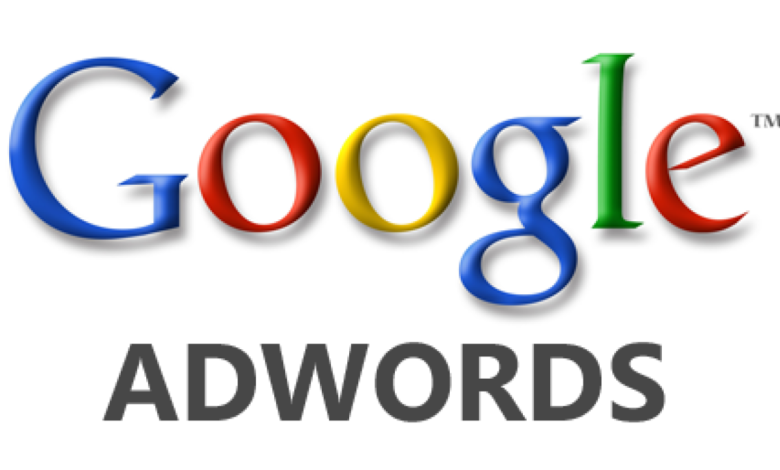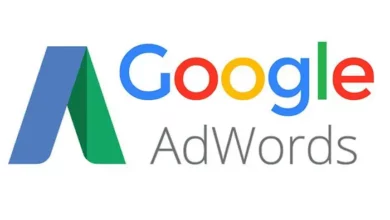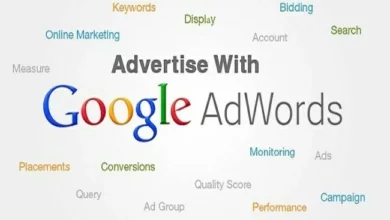Skyrocket Your Business with Google Ads: Expert Strategies Revealed!

Introduction
In the fast-paced digital landscape, online advertising has become the linchpin for businesses striving to gain a competitive edge and reach their target audience effectively.
Among the myriad of advertising platforms, Google Ads emerges as a beacon of opportunity.
This section delves into the transformative power of Google Ads, elucidating how it can catapult businesses to new heights.
With its colossal reach, precise targeting capabilities, and a variety of ad formats, Google Ads offers a versatile platform that caters to businesses of all sizes and industries.
From small startups to multinational corporations, businesses can leverage Google Ads to enhance their online visibility, drive qualified traffic, and ultimately, boost their revenue streams.
The Power of Online Advertising
Online advertising has revolutionized the way businesses connect with their audience.
Unlike traditional forms of advertising, online advertising leverages the immense reach and accessibility of the Internet to deliver targeted messages directly to potential customers.
This not only ensures that the right message reaches the right people but also allows for precise tracking and analytics, enabling businesses to measure the effectiveness of their campaigns in real time.
With the ability to reach a global audience, online advertising transcends geographical boundaries, making it an indispensable tool for businesses looking to expand their market reach.
Within the realm of online advertising, Google Ads stands as a juggernaut, commanding a significant share of the digital advertising landscape.
Introduction to Google Ads
Google Ads, formerly known as Google AdWords, is Google’s proprietary advertising platform that enables businesses to display their ads on Google’s search results pages, websites, YouTube, and other platforms within the Google Display Network.
It operates on a pay-per-click (PPC) model, meaning businesses only pay when a user clicks on their ad.
This section provides an in-depth introduction to the intricacies of Google Ads, from understanding its auction-based system to comprehending the importance of ad relevance and quality score.
Additionally, it sheds light on the diverse range of ad formats available, including search ads, display ads, video ads, and more, allowing businesses to choose the format that aligns best with their marketing objectives.
With its robust suite of tools and a vast network of partner sites, Google Ads empowers businesses to craft compelling ad campaigns, reach their target audience, and achieve measurable results in the digital arena.
Part 1: Understanding Google Ads
The Basics of Google Ads
At the heart of Google Ads lies a dynamic platform that connects businesses with potential customers in real time.
Understanding the basics of Google Ads is crucial for crafting effective advertising campaigns.
It operates on a pay-per-click (PPC) model, where advertisers bid on keywords relevant to their products or services.
When users perform a search using those keywords, Google’s algorithm determines which ads to display based on factors like bid amount, ad relevance, and quality score.
This section delves into the fundamental principles that underpin Google Ads, giving businesses a solid foundation to build their advertising strategies.
How Google Ads Works
Google Ads operates within an auction-based system, wherein advertisers compete for ad placement on Google’s search results and partner websites.
This section provides a comprehensive overview of how the auction process unfolds.
Factors such as bid amount, ad quality, and relevance play pivotal roles in determining the ad’s position.
Understanding this process empowers businesses to make informed decisions about their bidding strategies and ensures that their ads have the potential to reach the right audience.
Key Components of a Google Ad
A well-crafted Google Ad consists of several crucial elements that work in harmony to convey a compelling message.
From attention-grabbing headlines to persuasive ad descriptions and strategically placed keywords, each component plays a pivotal role in capturing the user’s attention and encouraging them to take action.
This section breaks down the key components of a Google Ad, providing insights into how businesses can optimize each element for maximum impact.
Types of Google Ads
Google Ads offers a diverse array of ad formats, each tailored to suit different business objectives and target audiences.
Understanding the various types of Google Ads is instrumental in choosing the right format to achieve specific marketing goals. This section provides an in-depth exploration of the five primary ad formats:
Search Ads
Search ads are text-based ads that appear at the top of Google’s search results page when users enter relevant search queries.
They are triggered by specific keywords, making them an effective way to capture users actively searching for products or services.
Display Ads
Display ads encompass a range of visual formats, including images, videos, and interactive content.
They are displayed on websites within the Google Display Network, reaching users as they browse various online platforms.
Video Ads
Video ads leverage the power of video content to engage and captivate audiences.
They can be displayed on YouTube, the second-largest search engine in the world, and within the Google Display Network.
Shopping Ads
Shopping ads are designed for e-commerce businesses, allowing them to showcase their products directly within the search results.
They include essential details like product images, prices, and store information.
App Promotion Ads
App promotion ads are tailored to drive app installations and engagement.
They appear across various Google platforms, encouraging users to download or interact with mobile applications.
By understanding the unique strengths and capabilities of each ad format, businesses can strategically deploy their advertising budget to achieve optimal results.
Part 2: Crafting Effective Ad Campaigns
Setting Clear Objectives
Before launching a Google Ads campaign, it’s imperative to establish clear and measurable objectives.
This section delves into the process of defining advertising goals.
Whether the aim is to increase website traffic, generate leads, boost sales, or enhance brand awareness, having well-defined objectives provides a roadmap for crafting a successful ad campaign.
Understanding Your Target Audience
Understanding the demographics, interests, and behaviors of the target audience is pivotal in creating ads that resonate.
This section outlines strategies for identifying and profiling the target audience, ensuring that ad campaigns are tailored to reach the right people with the right message.
Keyword Research and Selection
Keywords form the foundation of any successful Google Ads campaign.
This section explores the significance of keywords in ad targeting and offers insights into conducting effective keyword research.
Additionally, it introduces a range of tools that businesses can utilize to identify relevant and high-performing keywords for their campaigns.
Compelling Ad Copywriting
The art of persuasive ad copywriting lies in crafting engaging headlines and ad descriptions that compel users to take action.
This section provides actionable tips and techniques for writing captivating ad copy.
From creating attention-grabbing headlines to structuring persuasive ad descriptions, businesses will learn how to maximize the impact of their ad messaging.
Designing Impactful Visuals (for Display and Video Ads)
For display and video ads, visuals are paramount.
This section highlights the key elements of visually appealing ads, emphasizing the importance of high-quality images and compelling videos.
It also introduces a range of tools and resources that businesses can leverage to create stunning visuals for their ad campaigns.
By mastering the art of crafting effective ad campaigns, businesses can ensure that their messages are not only seen but also resonate with their target audience.
With clear objectives, precise targeting, strategic keyword selection, compelling ad copy, and visually appealing creatives, businesses are well-positioned to maximize the impact of their Google Ads campaigns.
Part 3: Optimizing Your Google Ads Campaigns
Ad Rank and Quality Score
Understanding the mechanics of ad rank and quality score is crucial for optimizing Google Ads campaigns.
This section unravels the factors that influence ad rank and delves into strategies for improving quality scores.
By mastering these elements, businesses can enhance the visibility and effectiveness of their ads.
Bidding Strategies
Choosing the right bidding strategy is a pivotal decision in any Google Ads campaign.
This section provides insights into manual and automated bidding options, outlining the advantages and considerations for each approach.
Additionally, it explores how bid adjustments can be leveraged to maximize return on investment (ROI) and achieve specific campaign objectives.
Ad Extensions
Ad extensions are a powerful tool for enhancing ad visibility and click-through rates (CTR).
This section introduces the various types of ad extensions available, from site links to callouts and more.
It also offers guidance on how to strategically implement ad extensions to provide users with additional information and incentives to engage with the ad.
A/B Testing and Performance Monitoring
A/B testing is a cornerstone of campaign optimization, allowing businesses to fine-tune their messaging and strategies for maximum effectiveness.
This section provides a comprehensive guide to conducting effective A/B tests, from crafting test hypotheses to interpreting results.
Additionally, it emphasizes the importance of utilizing analytics to monitor campaign performance and make data-driven adjustments.
By delving into the intricacies of ad rank, quality score, bidding strategies, ad extensions, and A/B testing, businesses can refine their Google Ads campaigns to achieve optimal results.
With a clear understanding of these optimization techniques, businesses are equipped to fine-tune their campaigns for maximum visibility, engagement, and return on investment.
Part 4: Budgeting and Cost Control
Setting a Realistic Budget
Determining an appropriate budget is a critical step in any successful Google Ads campaign.
This section provides guidance on setting a realistic budget that aligns with business goals and objectives.
It covers factors to consider, such as industry benchmarks, competitive landscape, and desired outcomes, ensuring that the allocated budget is both effective and sustainable.
Allocating Budget for Google Ads
Strategically allocating budget across different aspects of a Google Ads campaign is essential for optimizing performance.
This section explores the various components that require budget allocation, including keywords, ad formats, targeting options, and more.
By distributing resources effectively, businesses can maximize the impact of their campaigns.
Cost Estimation and Forecasting
Accurately estimating costs and forecasting outcomes is crucial for budget planning and decision-making.
This section introduces tools and methodologies for estimating the costs associated with different aspects of a Google Ads campaign.
It also provides insights into forecasting potential outcomes based on budget allocation, helping businesses make informed investment decisions.
Cost-Effective Strategies
Achieving maximum value from a Google Ads budget requires implementing cost-effective strategies.
This section outlines a range of tactics, from optimizing keywords and ad copy to leveraging ad extensions and targeting options.
By adopting these strategies, businesses can enhance their campaign performance while maintaining cost efficiency.
Maximizing Conversions within the Budget
Driving conversions is a primary goal of any Google Ads campaign, and doing so within budget constraints requires strategic planning.
This section offers actionable strategies for maximizing conversions while staying within budget limits.
It covers techniques such as conversion tracking, optimization, and leveraging data insights to improve conversion rates.
Strategies for Reducing CPC
Controlling costs per click (CPC) is essential for maintaining a cost-effective Google Ads campaign.
This section provides practical strategies for reducing CPC without compromising campaign performance.
From refining keyword selection to improving ad relevance and quality score, businesses will learn how to optimize their CPC for maximum efficiency.
By mastering budgeting and cost control strategies, businesses can ensure that their Google Ads campaigns deliver maximum value and return on investment.
From setting realistic budgets to allocating resources effectively and implementing cost-effective tactics, businesses are equipped to achieve their advertising goals while maintaining financial efficiency.
Part 5: Remarketing and Audience Targeting
Remarketing Strategies
Remarketing is a powerful tool for re-engaging with previous website visitors.
This section explores effective strategies for reaching out to users who have previously interacted with your website, providing valuable insights on how to tailor messaging and offers to rekindle their interest.
Targeting Previous Website Visitors
Targeting previous website visitors is a cornerstone of successful remarketing efforts.
This section delves into the tactics and tools available for segmenting and reaching out to users who have shown interest in your products or services, ensuring that your ads are front and center in their decision-making process.
Creating Custom Audiences for Remarketing
Custom audiences offer the ability to finely segment and target specific groups of users based on their behavior and interactions.
This section provides a detailed guide on creating custom audiences, from defining parameters to leveraging advanced targeting options for maximum impact.
Audience Segmentation and Targeting Options
Precise audience targeting is key to successful advertising campaigns.
This section explores various audience segmentation strategies and targeting options available within Google Ads.
From demographic and geographic targeting to behavioral targeting, businesses will gain insights on how to tailor their ads to specific audience segments.
Demographic Targeting
Understanding and effectively targeting specific demographics can significantly enhance the relevance and effectiveness of your ads.
This section provides actionable tips and strategies for leveraging demographic targeting options within Google Ads, ensuring that your messages reach the right audience.
Geographic Targeting
Geo-targeting allows businesses to reach users based on their location, a crucial feature for businesses with localized offerings.
This section outlines best practices for utilizing geographic targeting to maximize the impact of your advertising efforts in specific regions or areas.
Behavioral Targeting
Behavioral targeting enables businesses to reach users based on their online behavior and interests.
This section delves into the nuances of behavioral targeting, offering insights on how to leverage user data to deliver highly relevant and engaging ads.
By mastering the art of remarketing and audience targeting, businesses can effectively re-engage previous visitors and reach out to specific audience segments with tailored messaging.
From creating custom audiences to utilizing advanced targeting options, this section provides the tools and strategies necessary to maximize the impact of your advertising efforts.
Part 6: Ad Compliance and Policies
Ad Content Policies
Adherence to ad content policies is crucial for maintaining a healthy and effective Google Ads campaign.
This section provides a comprehensive overview of Google’s advertising policies, highlighting key guidelines and restrictions that businesses must follow to ensure compliance.
Understanding Google’s Advertising Policies
A deep understanding of Google’s advertising policies is essential for creating ads that meet the platform’s standards.
This section delves into the intricacies of Google’s policies, offering insights on what is considered acceptable content, as well as common pitfalls to avoid.
Avoiding Common Policy Violations
Staying within Google’s advertising policies can be challenging, especially with evolving guidelines.
This section identifies common policy violations that businesses may inadvertently encounter and provides guidance on how to steer clear of these pitfalls, ensuring that ads remain compliant.
Landing Page Optimization
The effectiveness of an ad campaign extends beyond the ad itself; the landing page plays a critical role.
This section offers expert tips on optimizing landing pages for relevance, user-friendliness, and conversion.
From content to design, businesses will learn how to create landing pages that resonate with visitors.
Creating Relevant and User-Friendly Landing Pages
Relevance and user-friendliness are paramount for a successful landing page.
This section dives into the elements that contribute to a high-quality landing page experience.
Businesses will gain valuable insights on how to align landing page content with ad messaging and create an intuitive user journey.
Ensuring Ad-to-Page Relevance
Maintaining a seamless transition from ad to landing page is essential for user satisfaction and conversion.
This section provides actionable strategies for ensuring ad-to-page relevance, including tips on matching ad messaging with landing page content and optimizing the user experience.
Conclusion
In this comprehensive guide, businesses have been equipped with expert strategies to harness the full potential of Google Ads.
From understanding the basics to crafting effective ad campaigns, optimizing budgets, and targeting specific audiences, businesses now have the tools to elevate their online advertising efforts.
By adhering to ad compliance and policies and creating relevant, user-friendly landing pages, businesses can take their online presence to new heights.
With a strategic approach to Google Ads, the potential for business growth and success is boundless.



